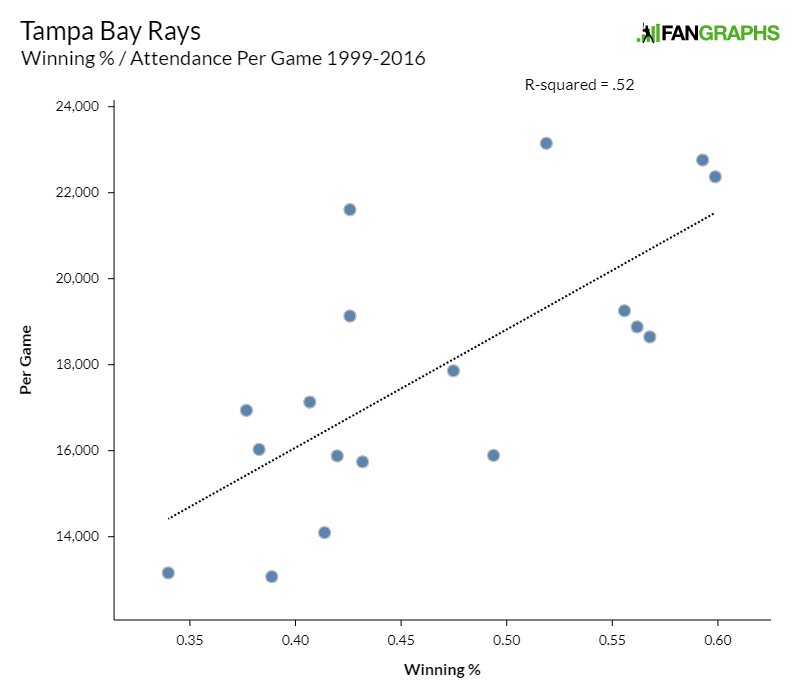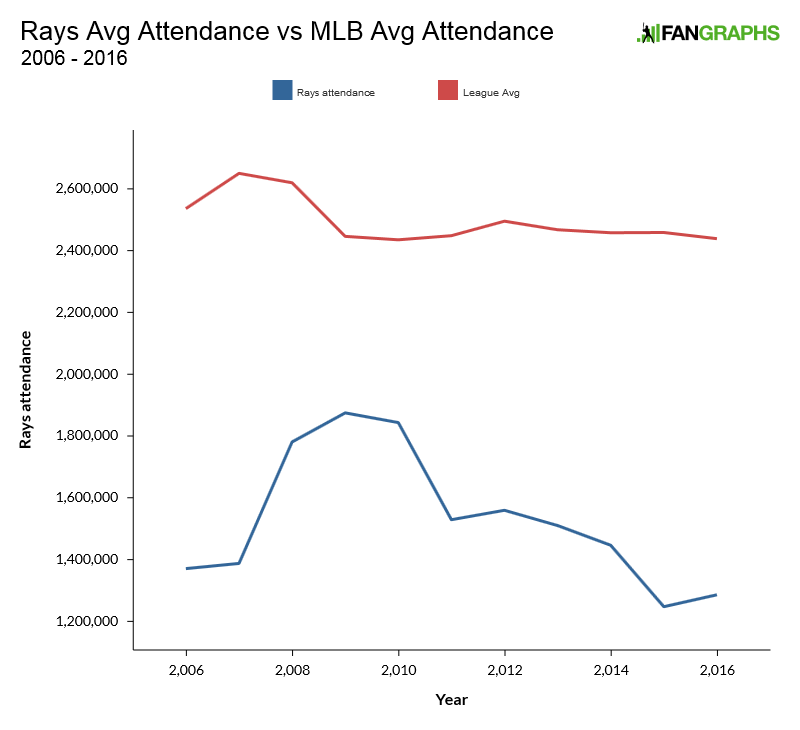How Do Baseball Teams Discount the Future?
This is Matt Swartz’ fourth piece as part of his July residency at FanGraphs. A former contributor to FanGraphs and the Hardball Times — and current contributor to MLB Trade Rumors — Swartz also works as consultant to a Major League team. You can find him on Twitter here. Read the work of all our residents here.
The most distinct feature of my approach to calculating the cost per WAR on the free-agent market is my inclusion of the draft-pick-based costs to signing free agents, in addition the more obvious monetary costs. This requires a greater collection of assumptions than a simple focus on the dollars spent on free agency, but provides a more robust estimate of what teams give up when they dip into the free-agent market. It also requires a logical economic framework, including opportunity costs, so it also requires estimating the foregone costs of draft picks that a club could have received had they not re-signed their own players.
The gap between my actual estimates of the cost per WAR and the same calculation absent draft-pick compensation is not trivial. While it normally is only around 7%, it reached as high as 20% in 2015. Of course, with the new CBA lowering draft-pick compensation, this difference is likely to drop, making this part of the analysis somewhat less important. However, it remains essential to consider changes in draft-pick compensation to understand changes in cost per WAR over time. What may appear, in some years, like a collective decision by clubs to spend more aggressively in the free-agent market is frequently just a product of lower opportunity cost of foregone draft picks, leading teams to pump more dollars into free-agent contracts.
The biggest challenge when utilizing this framework is determining the appropriate discount rate to use. This isn’t easy to do and can easily vary from team to team and over time, as well. This article won’t pin down a perfect number; it’s almost certain that a better estimate of the discount rate requires a more detailed analysis of trades and other decisions that teams make when considering how to value player performance at different points in the future. It’s also challenging to use this approach to determine if the discount rate that teams use has changed, because it appears that the method of estimating said rate is noisy enough that it varies over time within a very large range. However, it’s worth understanding the approach.
In this article, I attempt to present that approach. Before I begin, one note: some of what follows is rather technical. I feel much of it is necessary, though, to establish the entirety of my methodology before moving on, in later posts, to actual illustrative cases.
The simpler part of using this analysis is looking at draft-pick bonus money saved. While this pales in comparison to lost WAR values from missing out on draft picks, a full picture does require netting out how much a team saves by not paying bonuses on those draft picks. I’ve performed a slightly more sophisticated nonlinear approach to estimate bonuses for this series than in my previous work, basically assuming that bonuses paid to draftees have the same exponential structure (relative to pick number) as the WAR they produce varies by pick number. I’ve also found better estimates of the specific slot values for draftees by pick, leading to a better estimate.
Of course, the larger issue is analyzing the picks themselves. While the average pick surrendered has been around roughly the 30th overall, this has varied significantly and has been higher (at times) in the past. It also will certainly be lower in the future due to the new CBA rules. To estimate the value of picks, I continue to use the Draft Pick WAR Calculator developed by Sky Andrecheck way back in 2009. While the precise outputs have possibly changed over time, they probably haven’t changed much, and Andrecheck’s model is certainly the best publicly available one.
In addition to this estimate of the WAR produced by players according to their draft pick, I’ve also found (in my own research) that prospects tend to debut roughly three years after being drafted. Therefore, a player’s WAR tends to accrue to the team who drafted him from three to nine years after said player is drafted, after which the player is a free agent. That’s roughly equivalent in value to all the WAR accruing exactly six years after the player is drafted, so that’s what I use in my estimate. I also had to net out the actual salaries through arbitration that successful draft picks will eventually receive, knocking down the net value of the WAR created by about 20%.
I decided to continue using a 10% discount rate (meaning that teams currently value the ability to obtain future WAR 10% less each year into the future). This is still my best guess about how teams are valuing draft picks. This means the team values the WAR 56% less than they would if it all came right away. And since they have to pay roughly 20% of market value due to arbitration in the latter years, they value the WAR 20% less than that.
In the three tables below, I’ve split the free-agent market data I have available into three time periods: 2006-09, 2010-13, and 2014-16. I’ve looked at all players who earned salaries at least $2 million in excess of the league minimum and compared the cost per WAR for those free agents with and without draft-pick compensation attached.





